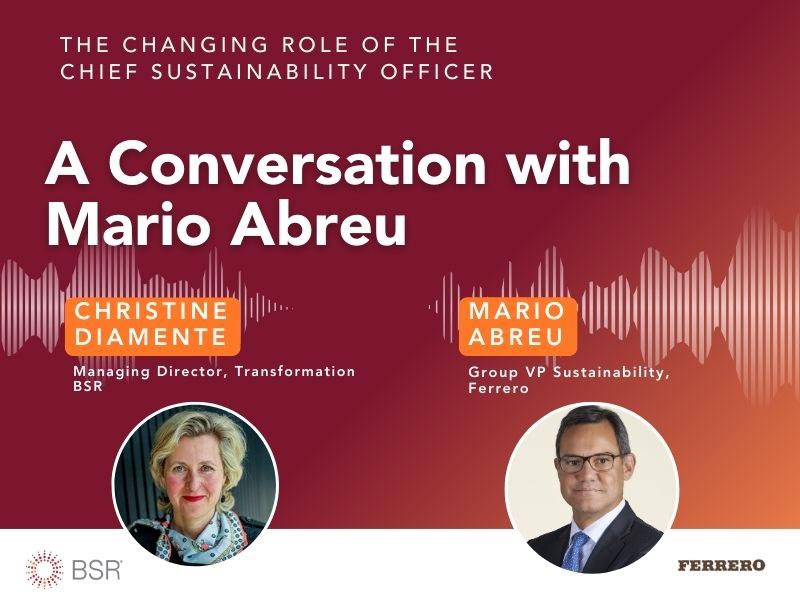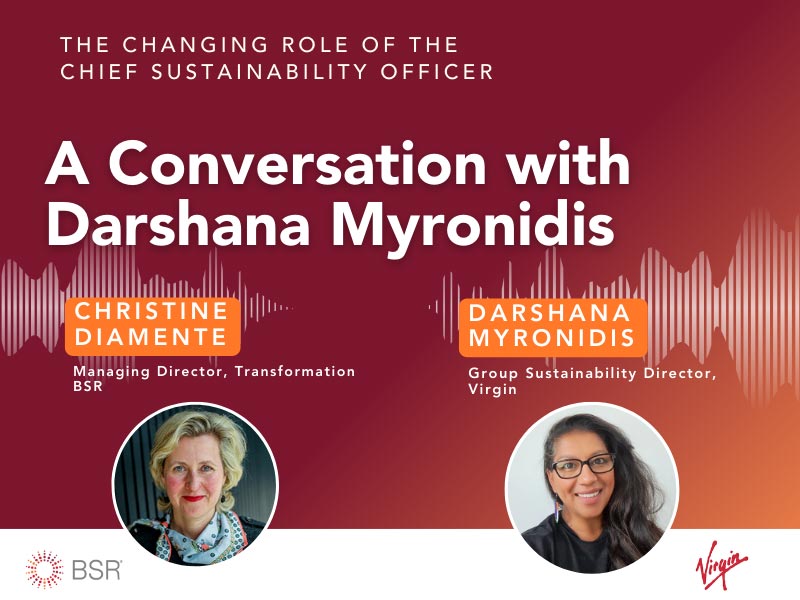
Photo by LYCS Architecture on Unsplash
Authors
-
Denielle Harrison
Former Manager, BSR
-
Charlotte Bancilhon
Former Director, Sustainability Management, BSR
Progress on harmonizing sustainability reporting standards and definitions hit the accelerator in 2020. After 20 years of discussions and evolving perspectives on what materiality means, who is it for, or whether the sustainability field should even be using the term “materiality,” we see a consensus emerging.
At BSR, we welcome this consensus. Frankly, after years of debate in our field, this clarity is refreshing!
A materiality assessment is often considered the cornerstone of a company’s sustainability efforts. If done well, a materiality assessment helps a company focus its sustainability strategies on the areas and topics that will have the most impact. It allows a company to understand stakeholder priorities and deliver decision-useful sustainability reporting to its stakeholders. It enables sustainability teams to build a shared understanding by relevant functions and business leaders on sustainability priorities.
However, in our experience, materiality assessments can fall short of delivering these key benefits. The process is often not well understood by business leaders and is disconnected from other business processes, such as strategic planning or risk management. It is often viewed as a check-the-box and low-value exercise. The methodology is often seen as more art than science. The results are often dependent on which stakeholders you engage and what is high on their agenda at the time you ask them. A materiality assessment provides a static picture of what is important today, with little insight on what will be important tomorrow.
Today, we can agree that materiality is double and dynamic. Double materiality recognizes that a business should report on both impacts inwards (sustainability topics that are financially material influencing enterprise value) and impacts outward (sustainability topics that are material to the economy, the environment, and people). Dynamic materiality acknowledges that the financial materiality of an issue can be dynamic, changing based on foreseen or unforeseen events.
In this four-part blog series, we will explain how to enhance the value of materiality assessment and what these new materiality definitions mean for businesses, whether they use this assessment for the purposes of reporting, strategy building, or stakeholder assessment.
- Part one will focus on why companies should assess double materiality.
- Part two will look at how companies can monitor dynamic materiality.
- Part three will focus on identifying and assessing the company’s impacts outwards and how this assessment links to a human rights assessment.
- Part four we will discuss methods to evaluate how sustainability issues can impact enterprise value.
Summary of Changes to the Definition of Materiality
- In June 2019, the European Commission introduced the “double materiality perspective” in its Guidelines on non-financial reporting: supplement on reporting climate related information. According to the Non-Financial Reporting Directive, a company is required to disclose information on ESG “to the extent that such information is necessary for an understanding of the company’s development, performance, position and impact of its activities.” The European Commission states: “The reference to the ‘company’s development performance and position’ indicates financial materiality, in the broad sense of affecting the value of the company. This perspective is typically of most interest to investors. (…) The reference to ‘impact of the company’s activities’ indicates environmental and social materiality. This perspective is typically of most interest to citizens, consumers, employees, business partners, communities and civil society organizations.”
- In June 2020, the Global Reporting Initiative (GRI) published its exposure draft with a revised definition of materiality. The GRI states: “The organization prioritizes reporting on those topics that reflect its most significant impacts on the economy, environment and people, including impacts on human rights. In the GRI Standards, these are the organization’s material topics.”
- In August 2020, the Sustainability Accounting Standards Board (SASB) published proposed changes to the SASB Conceptual Framework. The proposed changes to the definition of materiality are intended to align to an international definition of financial materiality rather than a U.S.-centric one. The proposed definition reads: “For the purpose of SASB’s standard-setting process, information is financially material if omitting, misstating, or obscuring it could reasonably be expected to influence investment or lending decisions that users make on the basis of their assessments of short-, medium-, and long-term financial performance and enterprise value.”
- The five reporting standards organizations, CDP, CDSB, GRI, IIRC, and SASB, (also known as Group of Five) published two papers, Statement of Intent to Work Together Towards Comprehensive Corporate Reporting in September 2020 and Reporting on enterprise value in December 2020. In these two papers, they describe materiality as "nested and dynamic" and present a comprehensive corporate reporting system with three lenses. The largest lens of reporting reflects “reporting on all sustainability matters that reflect significant positive or negative impacts on people, the environment and the economy.” The second lens is a subset of topics reflecting “those sustainability matters that create or erode enterprise value.” The third lens is the smallest subset of topics “already represented as monetary amounts recognized in the financial statements.” Materiality is dynamic because topics can move from the larger lens to the smaller lens and become financially material over time.
- In September 2020, the IFRS Foundation, which sets global standards in financial accounting, launched a Consultation Paper on Sustainability Reporting. One of the key questions it asks is whether a global standard should focus on issues material to investors ("single materiality") or address topics “that are material to multiple stakeholders’ understanding of a company’s effect on its environment” ("double materiality").
Topics
Let’s talk about how BSR can help you to transform your business and achieve your sustainability goals.







